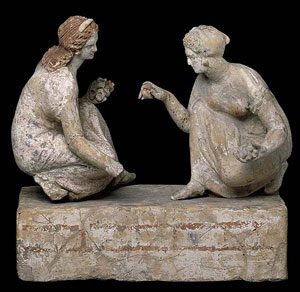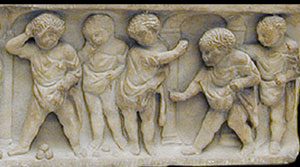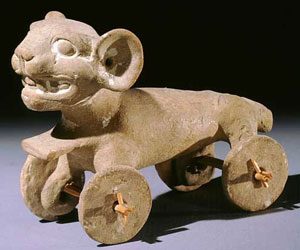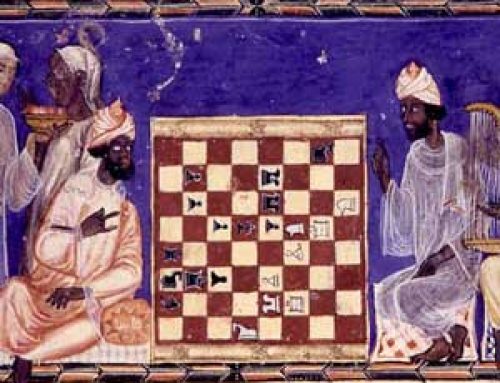
Gambling games: Greek girls playing knucklebones (ca. 200 BC, now in British Museum)
People loved to gamble
Gambling games were very popular all over the world from as early as we can tell. People played games with knucklebones and cowrie shells, and with flat sticks.
Early African games
Mesopotamian games
Ancient Indian games
Native American games
Knucklebones are the vertebrae (the backbone) of medium-sized animals like sheep or goats, and the games you play with them are like jacks (In fact you can still find jacks shaped like knucklebones some places).
What are vertebrae?
Where do sheep come from?

Roman boys tossing nuts (tomb of Lucius Aemilius Daphnus, ca. 300 AD)
You can also play similar gambling games just with small stones, or with nuts, like these little boys in ancient Rome. And people also played games with modern-looking dice as early as ancient Egypt.
History of dice
Children played with dolls
Children all over the world have also played with dolls since before there were even humans, when chimpanzees played with sticks.

A Roman doll with jointed arms and legs
Jointed arms and legs
In ancient Rome and China, and among the Inuit in Alaska, some dolls were made of wood and some of clay and bone and ivory. Some dolls had jointed legs and arms, so the children could move them. Others are all in one piece. This jointed ivory doll is from Tarragona in Spain.

Aztec pull toy, ca. 1500 AD
Pull toys and rattles
Children had many other toys too: rattles, and little wooden horses and wagons on wheels that you could pull along on a string, and wooden blocks that they could stack up and knock down.
And they played board games
Board games may have started with the African game of Mancala. By the Bronze Age, people in Mesopotamia and India were playing backgammon. In the early Middle Ages, people in China and India developed chess, Go, and playing cards. These games slowly spread to other places – to Africa and Europe, and then to the Americas.




